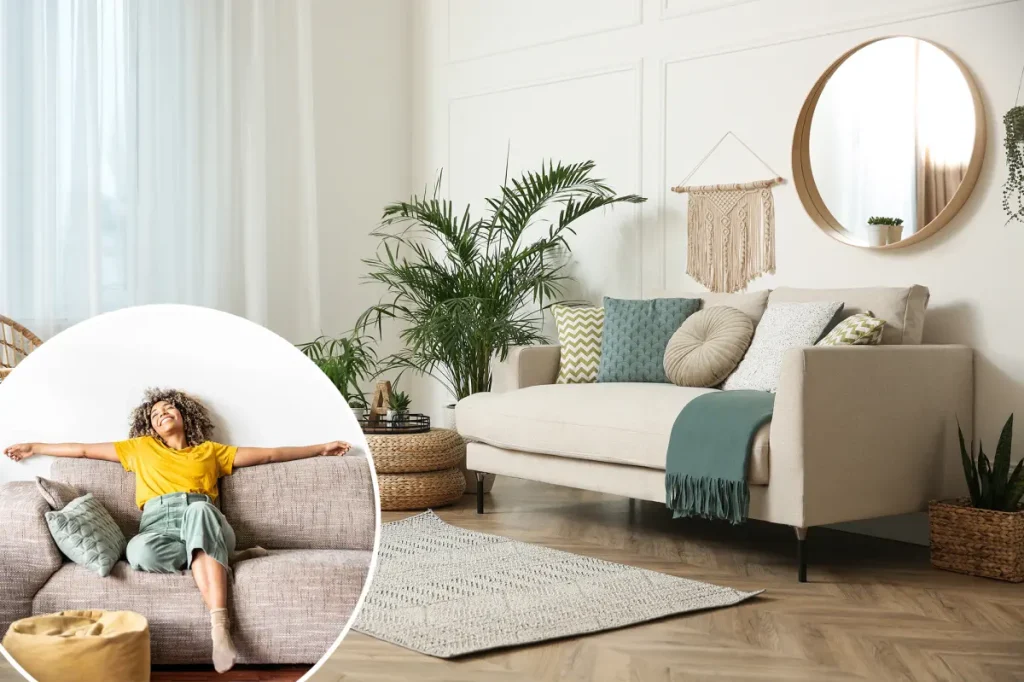Finding Sanctuary: America’s Favorite Spots at Home
In the gentle curve of a well-worn mattress, beside cherished Batman memorabilia, or nestled in a grandmother’s antique chair—these are the places Americans call their own within their homes. A recent survey of 2,000 U.S. adults across generations revealed that these personal “spots” have become more than just comfortable places to sit; they’ve evolved into sacred spaces that provide respite from an increasingly stressful world. The research, commissioned by Stressless furniture, uncovered how these personal territories have become vital to Americans’ mental wellbeing, with the average person claiming two different spots throughout their home as exclusively theirs. For younger generations like Gen Z and millennials, this territorial behavior is even more pronounced, with 29% maintaining between three and four different personal spaces within their homes. These aren’t casual preferences—they’re long-term commitments, with respondents having claimed their favorite spots for an average of four years, while 17% have maintained their special place for over a decade.
These personal spots reflect the unique character of their owners. Some people enhance their spaces with personal touches: headphones and flip-flops by the garden hammock, or strategic positioning of a computer chair “where I can see everything.” Others cherish spaces with emotional significance, like a late father-in-law’s recliner that carries memories along with comfort. The attachment to these spots runs remarkably deep—79% of respondents say their housemates know exactly where their spot is, and 54% would take serious offense if someone dared to sit in their designated place. Many have established personal rules around these spaces, with 19% prohibiting work activities there and 18% reserving their special spot exclusively for particularly stressful days. The survey revealed that more than half (52%) consider their favorite spot to be “sacred” or designated for a specific purpose, highlighting how these physical spaces have transcended mere furniture arrangements to become personal sanctuaries.
The primary function of these personal territories appears to be psychological restoration. For the majority of Americans (58%), their spot serves as a place to relax and unwind, while 41% use it for quiet time away from the chaos of daily life. The generational differences are revealing: 40% of Gen Z specifically use their spots for self-care and mental health purposes, while 30% of millennials dedicate their spaces to hobbies and passions. Perhaps most telling is that 70% of respondents expressed that sitting in their favorite spot feels like wiping their mental and emotional slate clean—a powerful metaphor for how these physical spaces enable psychological renewal. “It’s no secret that Americans are experiencing a stress epidemic, faced with anxiety in just about every aspect of their lives,” noted Beverly Kastel, Stressless marketing director for North America. “While it’s refreshing to see that something as simple as a favorite ‘spot’ is helping to wipe away this stress, it’s important to have a space where you’re able to relax and unwind.”
This emphasis on home sanctuaries reflects broader patterns of stress in American life. The survey found that Americans report feeling twice as stressed at work compared to at home (59% vs. 29%), with an additional 43% experiencing stress during everyday activities outside the home like running errands or dining out. These findings help explain why two-thirds of respondents (67%) feel relieved when plans get canceled and they can remain at home, a sentiment particularly strong among millennials at 74%. The data suggests a significant shift in social habits, with nearly three-quarters (74%) of those surveyed considering themselves more of a homebody now than ever before. This retreat to domestic spaces represents a conscious strategy for managing the overwhelming stressors of contemporary American life, where the predictability and control of one’s home environment offers a psychological advantage over the uncertainties of public spaces.
The sanctification of home spaces is relatively recent but profoundly important to Americans’ sense of wellbeing. An overwhelming 82% of respondents consider their home their “sanctuary,” with most having developed this perspective within the last five years. This timeframe suggests that while the pandemic likely accelerated this trend, the movement toward viewing homes as emotional refuges rather than merely functional spaces was already underway before COVID-19. This transformation represents a significant shift in how Americans relate to their domestic environments—no longer just places to eat and sleep, but deliberately cultivated environments for psychological restoration. “While there may not be much you can do about stressors at work or elsewhere, establishing your home as your sanctuary is a sure-fire way to leave that stress at the door,” explained Peter Bjerregaard, President of Ekornes, Inc., maker of Stressless furniture. “Your home should be the place that restores your energy, not drains it. When you design your space with spots for comfort and relaxation in mind, you’re not just decorating—you’re investing in your well-being.”
The implications of this research extend beyond interior design preferences to highlight fundamental changes in how Americans are responding to heightened social and workplace stressors. By creating and fiercely protecting personal spaces within their homes, people are establishing psychological boundaries that help them manage an increasingly demanding world. These favorite spots—whether a kitchen counter, round beanbag chair, or cherished recliner—serve as physical anchors for emotional wellbeing. They represent small territories of perfect control in lives often defined by external pressures and demands. As stress levels continue to rise across society, the humble favorite spot has become an essential coping mechanism—a place where Americans can momentarily escape, regroup, and restore their depleted emotional resources. In this context, furniture isn’t just functional; it’s therapeutic. The personalization of these spaces isn’t mere decoration but a form of self-care, allowing individuals to create environments perfectly calibrated to their comfort needs. In a world where so much feels beyond control, these personal sanctuaries offer a small but significant domain where individuals can exercise perfect autonomy, suggesting that the most effective stress management might start with something as simple as claiming your own special corner of home.


